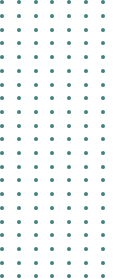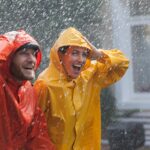Sustainability, circular economy and environment
The table below summarises the most recent publications regarding the environment, circular economy, and sustainability (non-exhaustive):
| Entity | Date | Publication |
| United Nations | 04/09/2023 | Zero draft text of the international legally binding instrument on plastic pollution, including in the marine environment. |
| European Commission | 20/09/2023 | Directive (EU) 2023/1791 of the European Parliament and of the Council of 13 September 2023 on energy efficiency and amending Regulation (EU) 2023/955
This directive establishes a common framework of measures to promote energy efficiency within the European Union in order to ensure that its targets on energy efficiency are met and to enable further energy efficiency improvements. The aim of that common framework is to contribute to the implementation of Regulation (EU) 2021/1119 of the European Parliament and of the Council and to the security of the European Union’s energy supply by reducing its dependence on energy imports, including fossil fuels. |
| European Commission | 26/09/2023 | Commission Delegated Regulation (EU) 2023/2049 of 14 July 2023 amending Regulation (EU) 2017/852 of the European Parliament and of the Council as regards mercury-added products subject to manufacturing, import and export prohibitions. |
| European Commission | 27/09/2023 | Amendments adopted by the European Parliament on 30 March 2023 on the proposal for a regulation of the European Parliament and of the Council on substances that deplete the ozone layer and repealing Regulation (EC) No 1005/2009 |
| European Commission | 27/09/2023 | Amendments adopted by the European Parliament on 30 March 2023 on the proposal for a regulation of the European Parliament and of the Council on fluorinated greenhouse gases, amending Directive (EU) 2019/1937 and repealing Regulation (EU) No 517/2014 |
| European Commission | 16/10/2023 | The Commission proposes measures to reduce microplastic pollution from plastic pellets
Plastic pellets are the one of the largest sources of unintentional microplastic pollution. The Commission has proposed that operators act in order of priority as follows: prevention of any spills of pellets; containment of spilled pellets to make sure they do not pollute the environment; and, as a final option, clean up after a spill or loss event. |
| European Commission | 16/10/2023 | Drinking water – Adding or removing starting substances, compositions or constituents from the European positive lists
This delegated act is part of a group of initiatives for creating the EU system and lays down the procedure for amending the European positive list (‘EUPL’) of starting substances, compositions or constituents to be used in the manufacture of materials or products intended to be in contact with drinking water. |
| European Commission | 16/10/2023 | Drinking water – Marking of products in contact with drinking water
This delegated act is part of a group of initiatives for creating the EU system. It will draw up harmonised specifications for the marking of products to be used in contact with drinking water. |
European Commission’s thinking about the restriction of microplastics intentionally added to products
On 17th October 2023, the European Commission has published its current thinking on the application of the microplastics restriction, (Entry 78 of Annex XVII of REACH), including to plastic glitter on its own and in products.
The prohibition of placing on the market applies as of 17 October 2023 to microplastics including plastic glitter (unless biodegradable or soluble), on their own or intentionally added to products, for uses for which no transitional period is set in the restriction (e.g. art and crafts kits, toys, Christmas decorations, etc..).
Some key points from the European Commission’s thinking as published yesterday:
- Plastic glitter is not affected by the ban if, when used, it is trapped in a solid matrix (e.g. glitter glue), solid films (e.g. paints, inks) or solid objects (e.g. inside jewellery, spray can caps, etc.) or is fully contained (e.g. in snow globes).
- When microplastics, including glitter, are affixed to an article, the scenario is more complex and depends on whether the microplastics can be considered an integral part of that article (and therefore the ban does not apply, because articles are out of scope) or not (in which case the ban applies to the microplastics). As a general rule:
- In case of glittered articles for which the decorative function is secondary – such as textiles used for garments or footwear, glitter is always regarded as an integral part of the article. These glittered articles – e.g.: clothing, shoes, curtains – are out of the scope of the restriction.
- Concerning plastic glitter that is affixed to objects, the sale ban would apply as of 17 October 2023 only to glittered decorative objects (such as – but not limited to – Christmas decorations or toy/party hats) from which glitter detaches during normal use (glitter can only be regarded as an integral part of the article and, therefore, excluded from the ban, if it does not detach from the article during normal end use (including storage))
- At this stage, the Commission is not in a position to recommend a standard test to prove whether glitter detaches during normal end use.
- In order to benefit from the derogation in paragraph 16 of the restriction and continue to be sold, imported products not benefiting from a transitional period under paragraph 6 (e.g. art and craft kits, toys) need to arrive on the customs territory of the EU before 17 October 2023.
The above is the current thinking of the European Commission. It will have to be seen, when the official Q&A guidance about this restriction would be released by the end of the year, how or which method would be recommended to demonstrate that the glitter does not detach during normal use, if any.
For glittered articles to be exempted from this restriction, it is essential to ensure glitter is permanently applied on any type of product so that it is not detached during normal use.
Read the full details of the European Commission’s thinking here.
Completion of the consultation stage on PFAS restriction proposal
On the 25th September 2023, consultation about the proposal to restrict per- and polyfluoroalkyl substances (PFAS) was closed with more than 5.600 comments from more than 4.400 organisations, companies and individuals.
The comments will be reviewed by the five countries (Denmark, Germany, the Netherlands, Norway and Sweden) who prepared the initial proposal, along with ECHA’s scientific committees for Risk Assessment (RAC), Socio-Economic Analysis (SEAC). After this, the RAC and SEAC will develop their scientific opinions in order for ECHA to deliver the final opinions to the European Commission.
The Commission, together with the EU Member States, will decide on the restriction.
For more information, consult the ECHA website here.
EU Ecolabel criteria for absorbent hygiene products
On the 22nd September 2023, the European Commission published Commission Decision (EU) 2023/1809 on EU Ecolabel criteria for absorbent hygiene products and for reusable menstrual cups.
The new Circular Economy Action Plan stipulates that the durability, recyclability and recycled content requirements are to be include more systematically in the EU Ecolabel criteria. For this reason, the revised EU Ecolabel criteria for absorbent hygiene products and reusable menstrual cups aims to promote products that have limited environmental impact along their life cycle, and that are produced using material-efficient and energy-efficient processes.
Reusable products made of textiles and products defined in Regulation (EU) 2017/745 are outside the scope of this Decision.
The EU Ecolabel criteria for these types of products and the related assessment and verification requirements shall be valid until the 31st December 2029.
It shall apply from the 21st September 2023 and decision 2014/763/EU is repealed.
A transitional period should be available to producers whose products have been awarded the EU Ecolabel for absorbent hygiene products on the basis of the criteria set out in Decision 2014/763/EU, so that they have sufficient time to adapt their products to comply with the new criteria and requirements.
For more information, consult the official publication here.
France | List of substances with endocrine disrupting properties is established
On the 12th October 2023, the Minister of Ecological Transition and Territorial Cohesion published several Decrees of 28 September 2023 relating to substances with endocrine disrupting properties.
One of the Decrees (text No 13) identifies:
- substances which have properties of endocrine alterations qualified as proven and presumed, may be made available to the public for commercial purposes;
- substances with endocrine disrupting properties classified as suspicious;
- the categories of products that present a particular risk of exposure to which the obligation of information applies to the presence of endocrine disrupting substances classified as suspicious.
Its aim is to provide information to consumers about the presence of substances with endocrine disrupting properties in ingredients, mixtures, articles and food products, as indicated by the AGEC law. This information must be available through electronic means, in open format, easily reusable and usable through an automated process system, for each product. This obligation also applies to certain categories of products that present a particular risk of exposure, which is why these endocrine disrupting properties are classified by ANSES in its specifications.
Another Decree (text No 14) designates an alternative method of informing the public, Scan4Chem, relating to information on the presence of substances which qualify as proven, presumed, or suspected endocrine disrupting properties in products.
These Decrees came into effect on the 13th October 2023.
Netherlands | Extended producer responsibility for textiles
As of the 1st of July 2023, the extended producer responsibility (EPR) for textiles is implemented by Decree of 14 April 2023 (EPR for textiles Decree) in the Netherlands.
Producers are responsible for ensuring an appropriate collection system, recycling and reusing of clothing and household textiles and the financing of this entire system.
The rules will apply new textiles sold in the Netherlands such as:
- Clothing
- Bedding
- Table linen
- Other household linen, such as towels and tea towels.
The main requirements for textile producers are as follows:
- Make it possible for consumers to give back their old textiles at any time and at no charge. It is up to the producers to decide how they do this. More information in Dutch here.
- Provide information to consumers about how to dispose of their old textiles and ensure that they understand what happens to these items.
- Annual report, where producer indicates how producer met its obligations in the previous year, related to the volume of textiles sold, reused and recycled.
- Producers can fulfill the obligation individually or collectively.
The important dates concerning this implementation are as follows:
| Date | Requirement |
| 01/07/2023 | Register with the government within six weeks. |
| 2024 | Report the volume of textiles producers sell in the Netherlands.
Note: The form shall be completed before August 1, 2024 for the year 2023. The form will be available an online reporting from on the Dutch waste circular official page. |
| 2026 | Report the volume of textiles producers reuse and recycle |
| 2050 | All textiles must be either recycled or sustainably produced. |
For more information, consult the policy programme for circular textile 2020-2025 on Government of the Netherlands website here.
US | EPA Finalizes PFAS Data Reporting Rule
On September 28, 2023, the U.S. Environmental Protection Agency (EPA) finalized one-time reporting requirements for Per- and Polyfluoroalkyl Substances (PFAS) under Section 8(a)(7) of the Toxic Substances Control Act (TSCA). Under the final rule, any person that manufactures or imports or has manufactured or imported PFAS or PFAS-containing articles in any year since January 1, 2011 will be required to electronically report information to the EPA. Reports must cover in-scope activities in each calendar year from 2011 through 2022. Additionally, there is no de minimis threshold for reporting.
In the final regulation, the EPA decided that a broad structural definition was more suitable for this rule than a specific list of named substances. The final rule defines PFAS as including at least one of these three structures:
- R-(CF2)-CF(R′)R″, where both the CF2 and CF moieties are saturated carbons;
- R–CF2OCF2-R′, where R and R′ can either be F, O, or saturated carbons; and
- CF3C(CF3)R′R″, where R′ and R″ can either be F or saturated carbons.
The EPA has determined that at least 1,462 PFAS that are known to have been made or used in the US since 2011 will meet this definition. The EPA will provide a list of substances that meet this definition on the CompTox Chemicals Dashboard.
The final rule will be effective on November 13, 2023. Under the final rule, companies will have one year to collect the information required to be reported, followed by a six-month period during which reports must be submitted to the EPA. Most companies obligated to submit reports will have a reporting deadline of May 8, 2025. They can start reporting from November 12, 2024. However, “small manufacturers” only involved in importing articles will have additional 6 months to collect the data and have until November 10, 2025, to report. All submissions should be made via the EPA’s CDX portal.
The rule prescribes information required to be reported by a person manufacturing or importing PFAS substance or PFAS in a mixture using the Standard Form. The rule also allows person that imported articles containing PFAS to use a Streamlined Form. Following information will be required for the Streamline Form:
- Company and plant site information.
- Chemical-specific information
- Categories of use
- Imported article production volume.
- Additional article data: The submitter has the option to provide relevant additional information to EPA including supplemental attachments.
Recordkeeping Requirement: Each person who is subject to the reporting requirements of this rule must retain records that document any information reported to the EPA. Relevant records must be retained for a period of 5 years beginning on the last day of the submission period.
Small manufacturer means a manufacturer (including importer) that meets either of the following standards:
- First standard. A manufacturer (including importer) of a substance is small if its total annual sales, when combined with those of its parent company (if any), are less than $120 million. However, if the annual production or importation volume of a particular substance at any individual site owned or controlled by the manufacturer or importer is greater than 45,400 kilograms (100,000 lbs), the manufacturer (including importer) will not qualify as small for purposes of reporting on the production or importation of that substance at that site, unless the manufacturer (including importer) qualifies as small under paragraph (2) of this definition.
- Second standard. A manufacturer (including importer) of a substance is small if its total annual sales, when combined with those of its parent company (if any), are less than $12 million, regardless of the quantity of substances produced or imported by that manufacturer (including importer).
- Inflation index. EPA shall make use of the Producer Price Index for Chemicals and Allied Products, as compiled by the U.S. Bureau of Labor Statistics, for purposes of determining the need to adjust the total annual sales values and for determining new sales values when adjustments are made. EPA may adjust the total annual sales values whenever the Agency deems it necessary to do so, provided that the five-year average of the Producer Price Index for Chemicals and Allied Products has changed more than 20 percent since either the most recent previous change in sales values or May 28, 2020, whichever is later. EPA shall provide Federal Register notification when changing the total annual sales values.
For more information, consult the official publication 40 CFR part 705 here.
Perpetual regulatory evolution of nanomaterials
Nanoparticles have always existed in the environment, and can be produced by volcanic activity, photosynthesis reactions or even combustion.
With their many advantages, nanoparticles have been used by man to create nanomaterials, defined as materials in which at least 50% of the particles in the size distribution are nanoparticles. These are used in a wide variety of products: medicines, electronic systems, foodstuffs, chemicals, sporting goods (golf clubs, for example), and cosmetics.
In the case of cosmetics, a nanomaterial is defined in Cosmetics Regulation n°1223/2009 as an insoluble or biopersistent material, intentionally manufactured and characterized by one or more external dimensions, or an internal structure, on a scale of 1 to 100 nm.
Nanomaterials may be used in cosmetic products, but only under conditions strictly defined by regulations to ensure their safe use for human health.
In particular, the nanomaterials authorized in the appendices to the Cosmetics Regulation are:
Carbon black as a colorant, titanium dioxide, zinc oxide, Tris-Biphenyltriazine and Methylene Bis-Benzotriazolyl Tetramethylbutylphenol as ultraviolet filters.
In addition, since July 11, 2013, when a nanomaterial is used in a cosmetic product, the packaging of this product must state [nano] in the ingredients list, after the name of the ingredient.
After several years of monitoring nanomaterials in cosmetic products on the market, the DGCCRF and the ANSM published an information note on the definition of nanomaterials in cosmetics.
Following the revision of the definition of nanomaterial in the European Commission’s recommendation of June 10, 2022, in February 2023 the DGCCRF updated the briefing note published in July 2021.
Main changes in this revision of the SCCS guide on the safety assessment of nanomaterials in cosmetics: new sections have been introduced, there is a new recommendation for a definition of nanomaterials, the key aspects triggering safety concerns about a nanomaterial have been included, other sections have been updated…
To give you a complete picture of current and future changes, our experts are on hand to help you through the various stages and next testing plans to be implemented.
View our sustainability-related services or industries to understand how we can assist you comply with the above regulatory topics.




